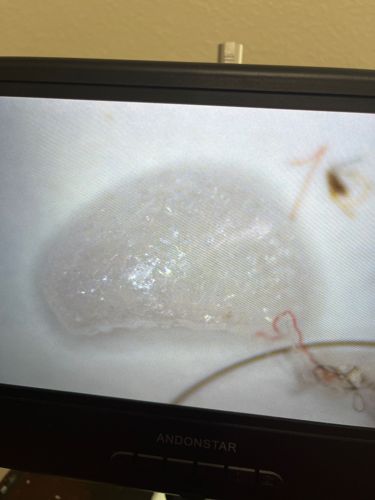Aphid (possibly a shed skin or dead specimen)
Scientific Name: Aphidoidea (Superfamily)
Order & Family: Hemiptera, Aphididae
Size: Typically 1-10 mm, though this image shows a much smaller specimen or a remnant.

Natural Habitat
Found on various plants, including garden plants, agricultural crops, and ornamental plants. Often on the underside of leaves or on new growth.
Diet & Feeding
Plant sap. Aphids are phytophagous, using piercing-sucking mouthparts to feed on the phloem of plants.
Behavior Patterns
Aphids are often found in colonies and reproduce rapidly, often parthenogenetically. They can be winged or wingless. They produce a sticky substance called honeydew. This image appears to show a very small, possibly dead or cast skin of an aphid, given its size and translucent nature, and the presence of what looks like plant debris or fibers nearby. The visible brown spot could be a part of the insect or debris.
Risks & Benefits
Risks: Can transmit plant viruses, cause stunted growth, leaf curl, and sooty mold (from honeydew). Benefits: Serve as a food source for beneficial insects like ladybugs and lacewings; some species are used in biological pest control research.
Identified on: 9/5/2025